
Case Studies
Drones are changing the roof inspection industry
Drones for roof inspection have many advantages over traditional methods, offering a safer, more efficient and cost-effective data-capture solution. Find out how drones can improve roof inspections and the best drones to conduct roof survey ... Read More

Find out the advantages of using drones for roof inspection, compared to traditional methods;
Drones provide a safer, more efficient and cost-effective solution for gathering rooftop data;
Drones enable real-time insights and can collect repeatable and automated data;
Drones can carry a range of cameras and sensors for a more robust and thorough inspection, and offer a more versatile inspection platform;
Find out some of the best DJI drones for roof inspection.
This image shows the distinct advantages of using a drone for roof inspection.

In a single flight, a high-resolution image was obtained quickly, easily, and in real-time - providing a full, comprehensive, and accurate view of the structure, without the costly and time-consuming task of erecting scaffolding and the potentially dangerous job of manually scaling the roof to collect the data.
Indeed, drones have become a valuable tool for inspecting rooftops - increasing efficiency, improving safety, gathering reliable and up-to-date insights, and maximising ROI, compared to traditional methods.
Drone operators have the added advantage of being able to deploy a range of cameras to conduct more thorough, accurate and versatile surveys, utilising payloads such as thermal sensors, high-resolution visual and zoom cameras, and even spotlights to enable inspections in low-light conditions.
These suite of cameras - coupled with the cost-effective, rapid and repeatable deployment nature of drones - enables timely data collection, which can be used to act early, take appropriate action before a problem emerges or escalates, and to track progress.
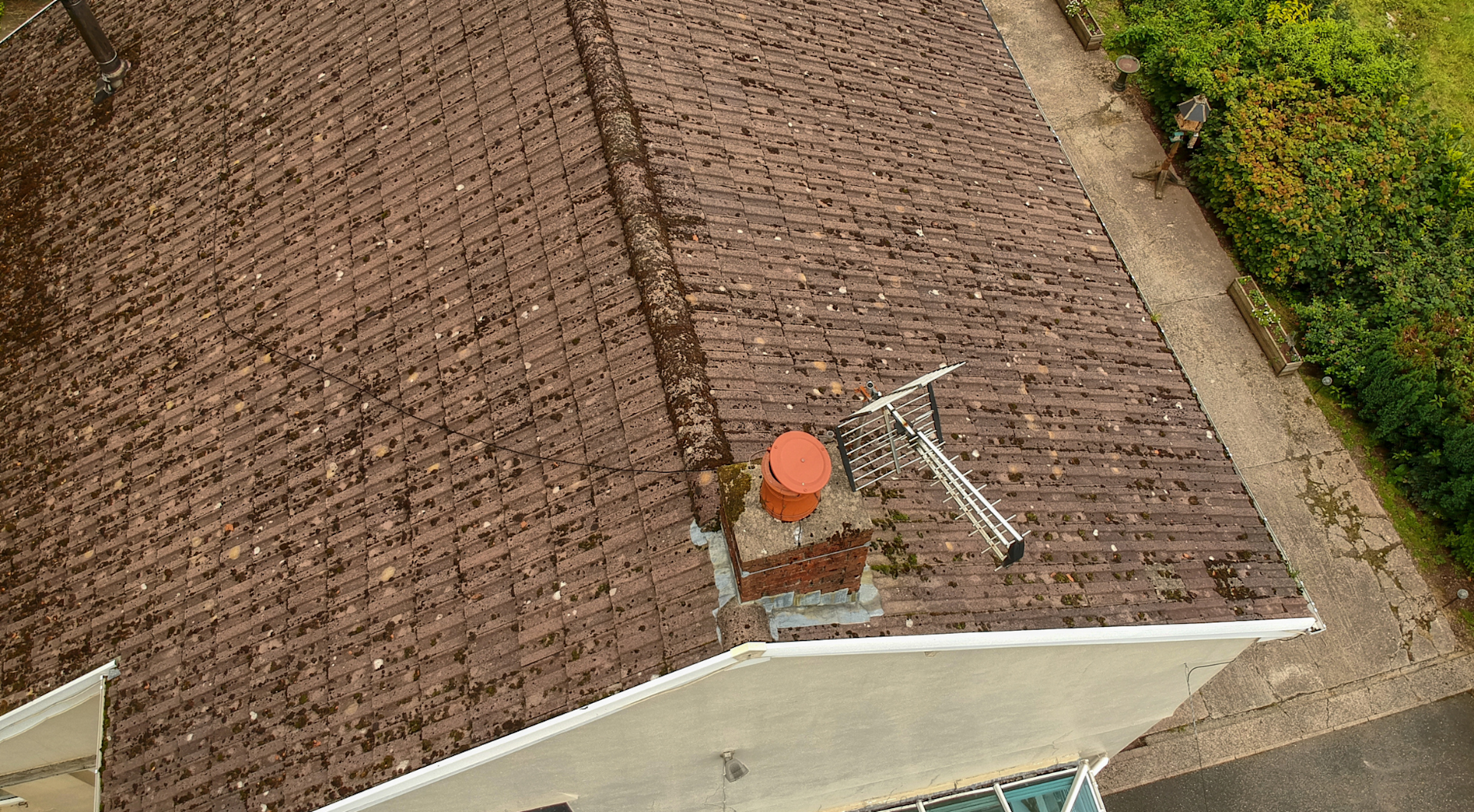
This represents tremendous benefits for rooftop inspection, which can be required for condition-based assessments, warranty protection, checking for weathering, structural damage, solar-panel installation, leak assessments, or preemptive checks.
This blog explores the benefits of deploying drones for roof inspections in more detail and recommends some of the best platforms available.
What Are The Benefits Of Using Drones For Roof Inspections Compared To Traditional Methods?
While traditional roof inspection methods have been the standard for many years, drones are becoming a more efficient, safe, cost-effective and accurate option for rooftop inspections.
Some of the benefits of utilising inspection drones are listed below.
1: Safety
Drones can provide a safe and efficient way to inspect rooftops, reducing the need for scaffolding, rope access, or other equipment associated with traditional methods that can be costly and time-consuming to set up.
As a result, drones eliminate the need for people to be on the roof or work from elevated roof platforms, which can be dangerous...
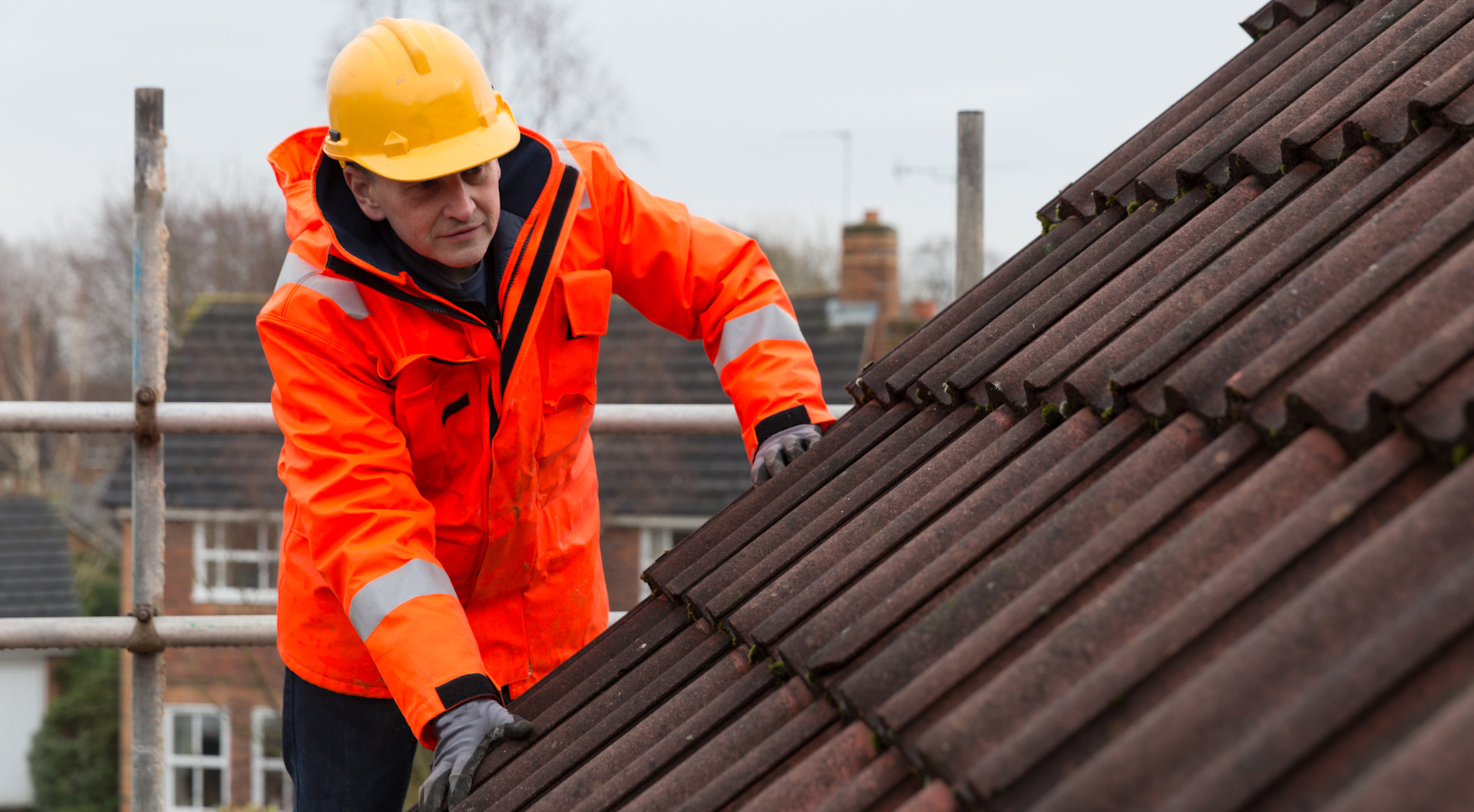
...and instead access the data they need with their feet firmly on the ground.
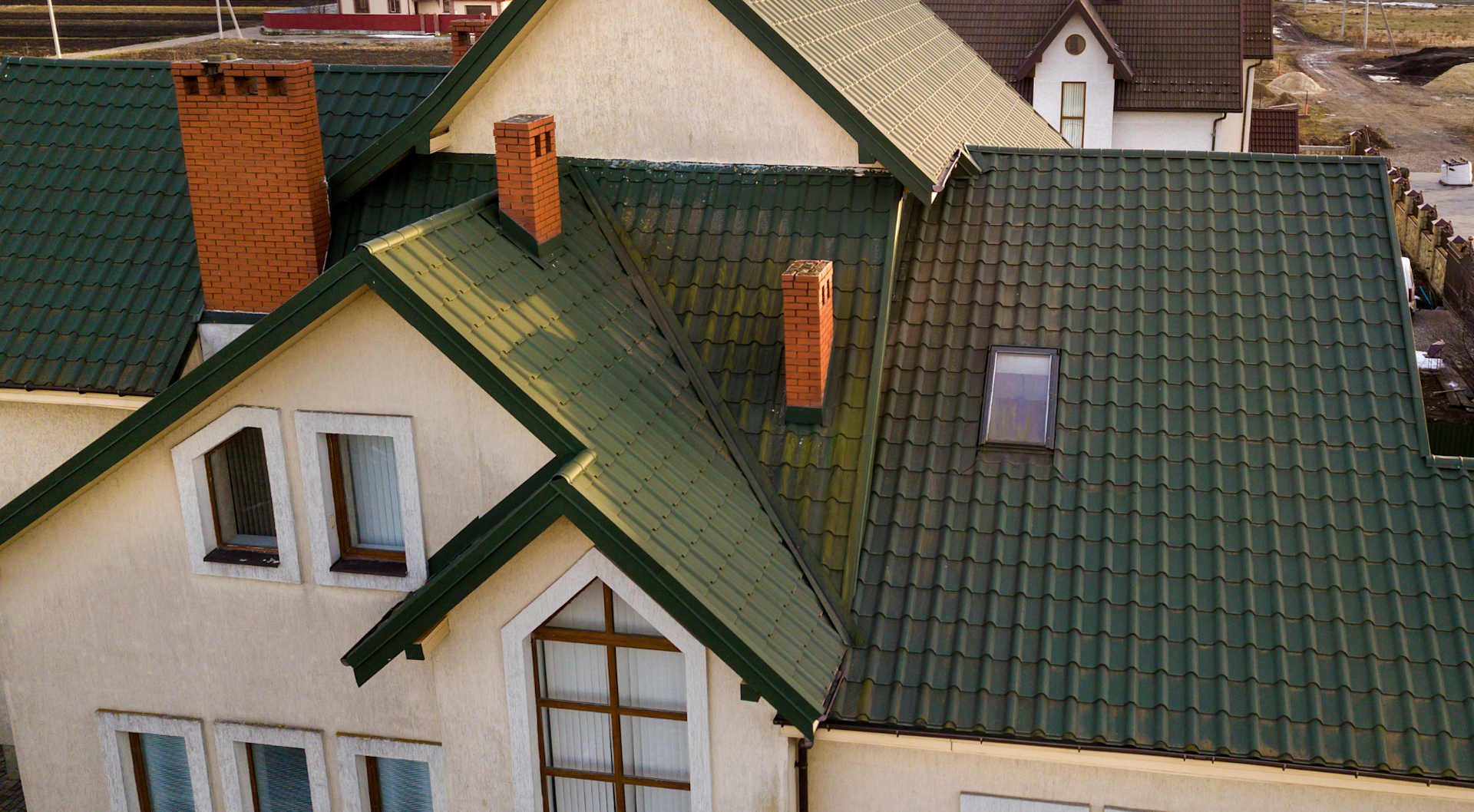
2: Accessibility
Drones provide access to areas of a roof that would otherwise be difficult or impossible to reach with traditional methods, such as steep pitches or high elevations, or features such as skylights and chimneys.
This enables inspectors to conduct a more robust and thorough search.
3: Speed
Drones can conduct a roof inspection quickly, reducing the time it takes to complete a job.
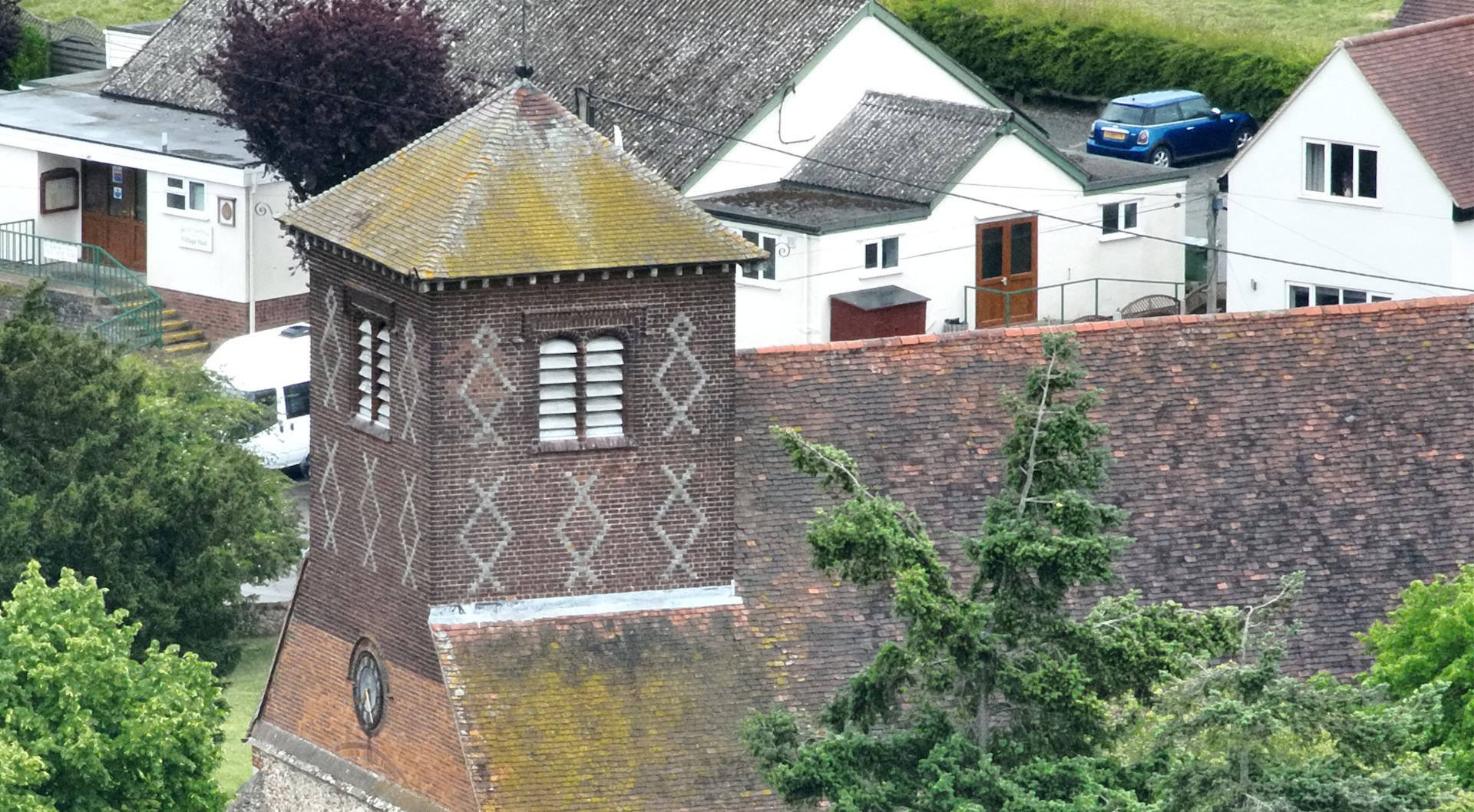
They can cover a large area in a shorter amount of time than traditional methods and are much quicker than erecting scaffolding or scaling the building using rope access to conduct a manual inspection.
4: Cost-effective
Drones can save time and money by providing a more efficient and accurate assessment of the roof's condition.
They can also reduce the need for scaffolding or other equipment, which can be costly and time-consuming to set up.
5: High-resolution Images
Drones can quickly and easily capture high-resolution images and videos, allowing for detailed inspections of the roof and its components.
This can provide a more accurate and detailed assessment of the roof's condition, and also offer a different and more complete perspective of the roof in one wide-angle shot.
For instance, this high-res image shows areas of this roof which have been damaged in a storm. This sort of record is beneficial for assessing the extent of the repairs and for submitting insurance claims.

These records can be kept digitally: Useful for sharing in the cloud for remote monitoring and inspection, or using to conduct assessments over time.
6: Night and Low-light Inspections
Drones can carry spotlights, enabling roof inspections to be conducted in low-light conditions.
Thermal drones can also be used to inspect roofs during the night and in low-light conditions. Using thermal drones for roof inspections will be covered in more detail later in this article.
7: Accuracy
No matter how much of a professional you are, human error is inevitable.
Using proper surveying techniques, a drone can create accurately-scaled images and keep results consistent across an entire project.
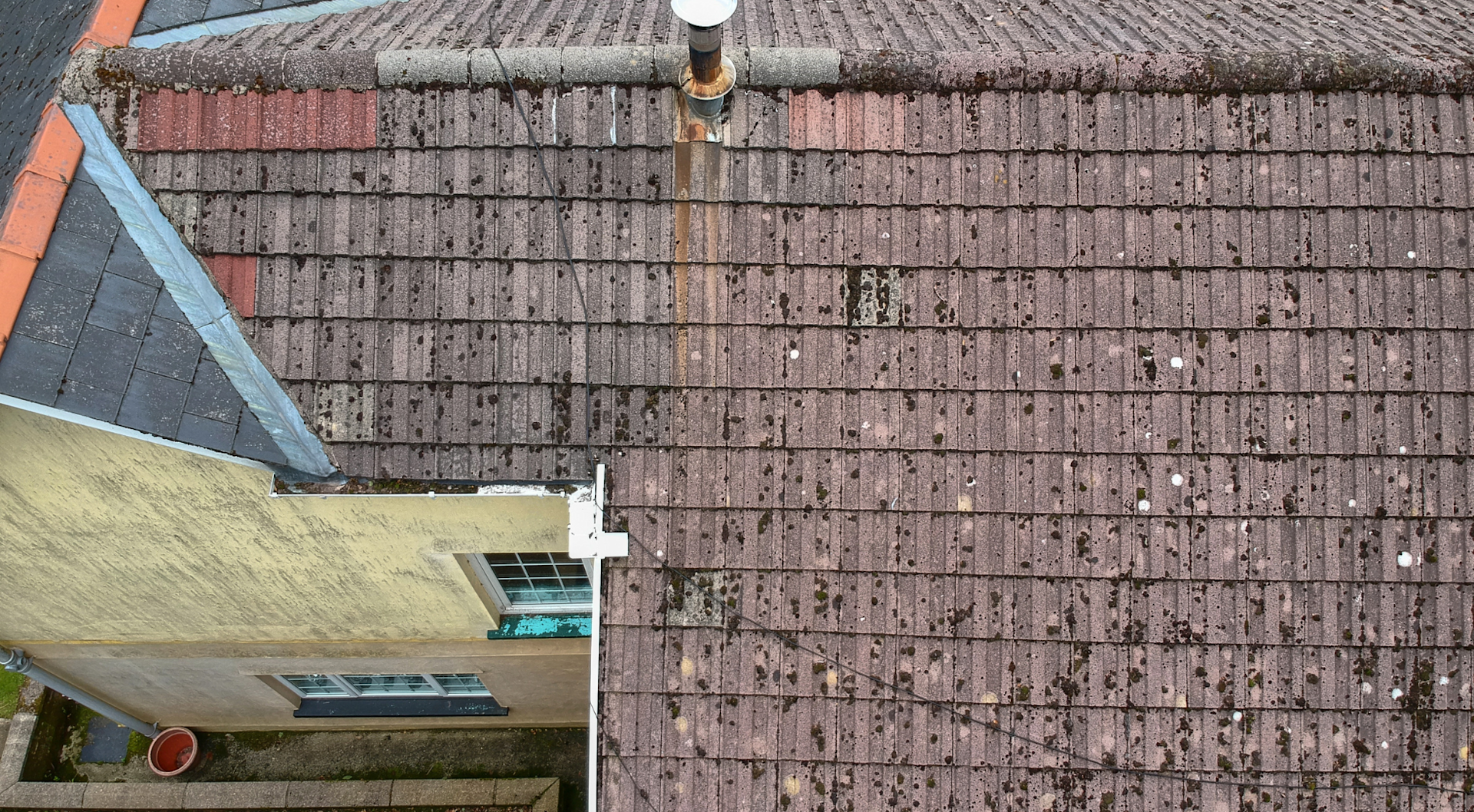
This is especially true if you’re working with a drone that can automate flight paths, as this takes yet another potential area of human error out of the equation.
Drones like the DJI M300 RTK have cameras that can automate routine inspections and capture consistent results every time.
8: Data and Reporting, Including Maps And Models
Drones can provide detailed data and reports that can be used to track the condition of the roof over time, identify potential issues before they become major problems, and plan for maintenance and repairs.
The data collected by the drone can be analysed to create a comprehensive report of the roof condition and potential issues.
Drones can also carry mapping payloads, such as photogrammetry cameras or LiDAR sensors, which can be used to build detailed maps and models of a rooftop. This can be useful to conduct measurements and condition-based assessments.
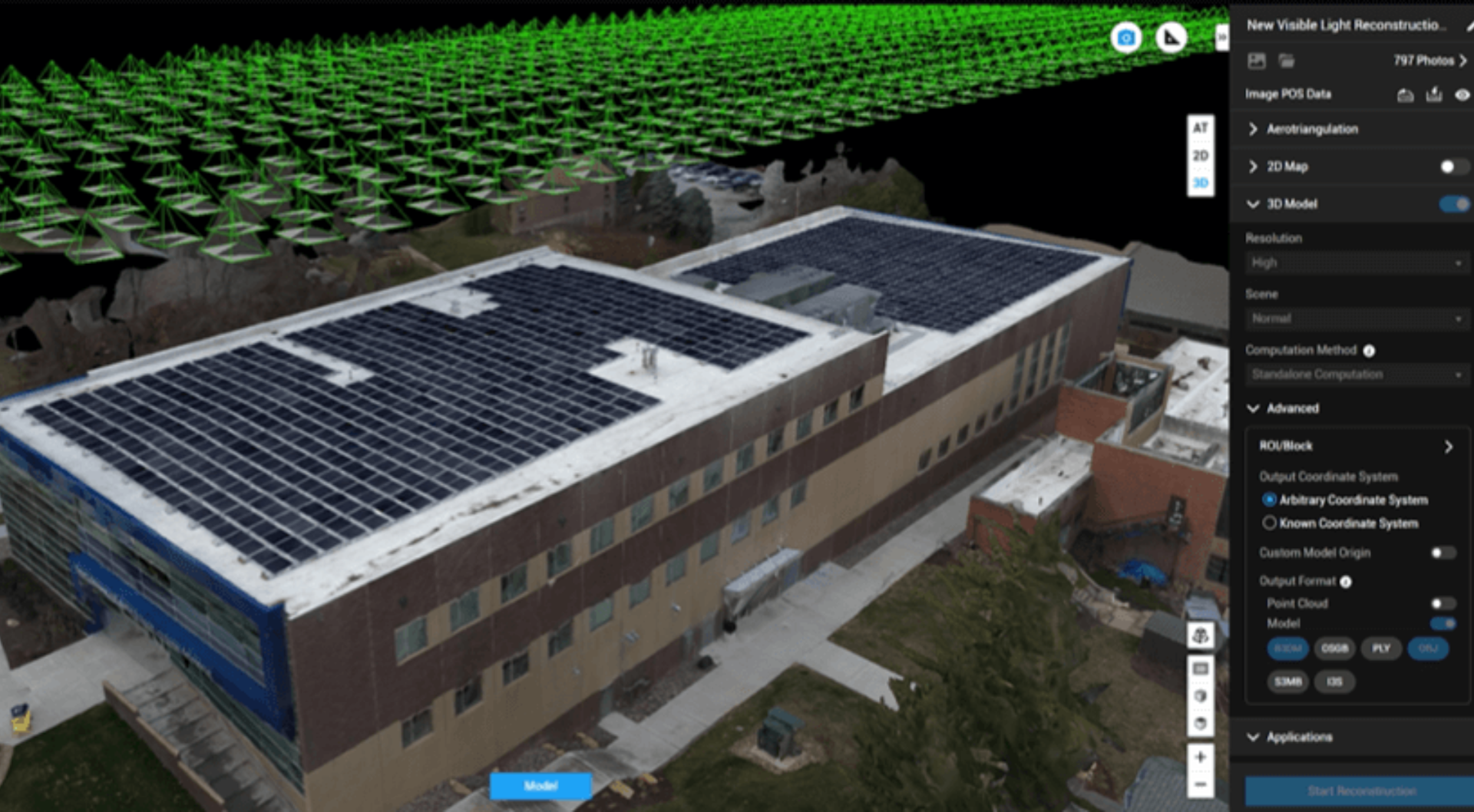
Thermal Drones For Roof Inspections
Thermal drones can be used for rooftop inspections because they have the ability to detect and identify heat signatures, which can indicate issues with insulation or other areas of energy loss.

This can help identify areas of the roof that are not performing efficiently and may need repairs or replacement.
Additionally, thermal imaging can detect issues that may not be visible to the naked eye such as moisture, leaks, and structural problems - as this side-by-side image demonstrates.
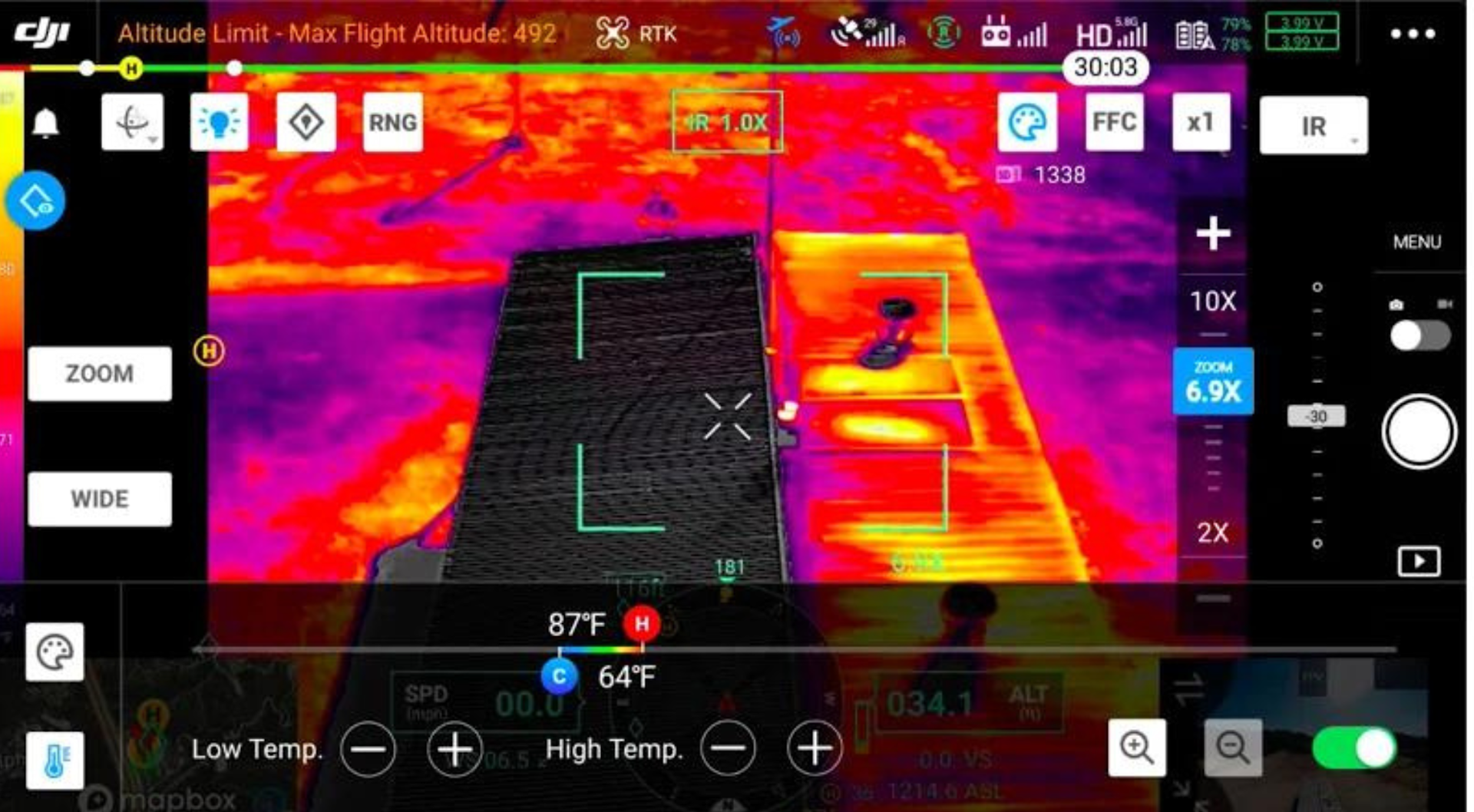
This allows for a more thorough and accurate inspection of the roof, which can ultimately save time and money in the long run.
Additionally, thermal drones can also be used to check temperature on solar panels which helps to ensure that solar panels are working efficiently and not overheating. Find out more about the benefits of using a drone for solar panel inspection.
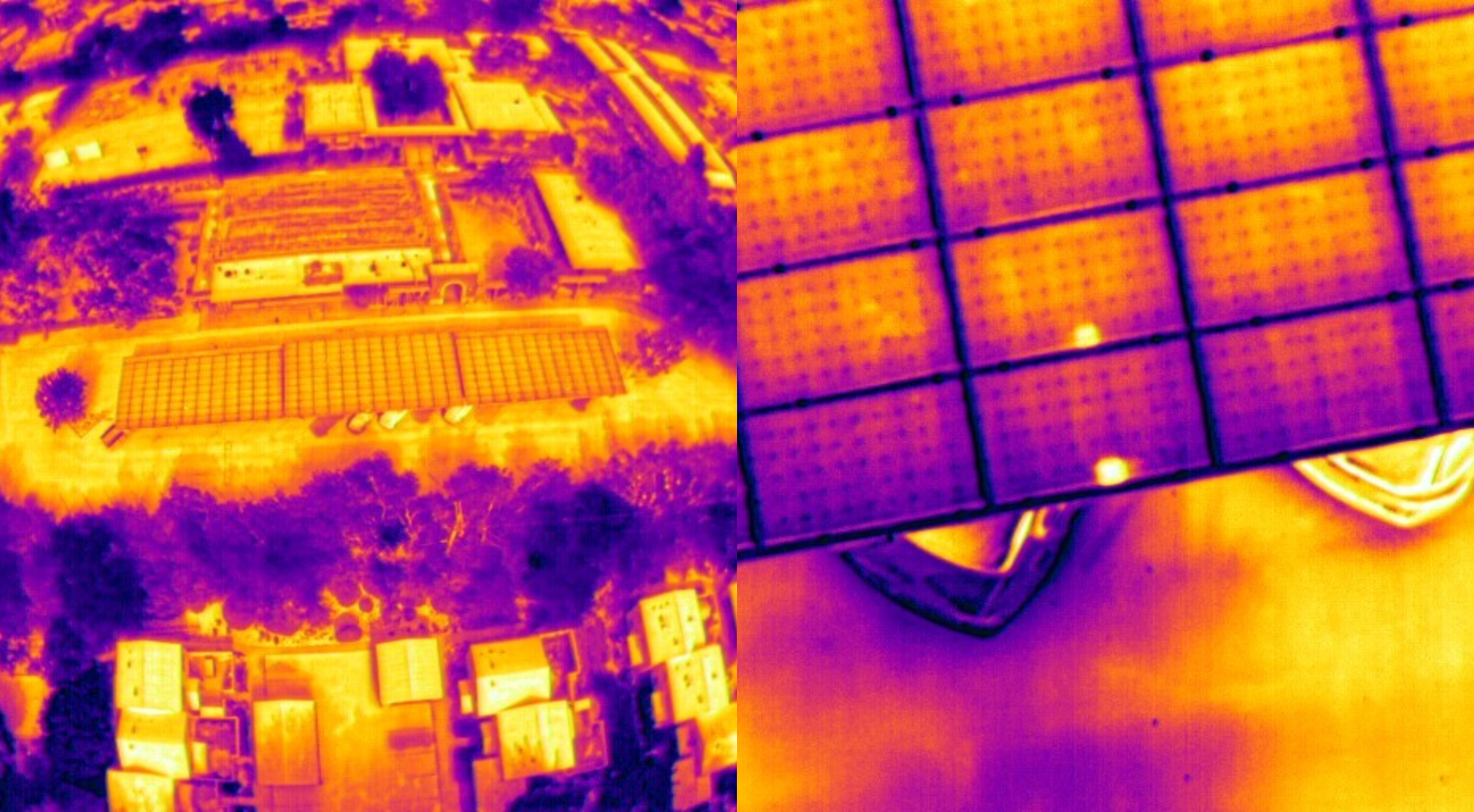
As mentioned previously, thermal drones have the added advantage of enabling roof inspections to be conducted in low-light conditions and at night.
The DJI Thermal Analysis Tool can be used to analyse raw images and processed datasets to fully understand temperature readings.
DJI drones, such as the Mavic 3T, M30T, and M300 RTK Series with H20T enable operators to view thermal and visual data side-by-side, to help better understand the target.
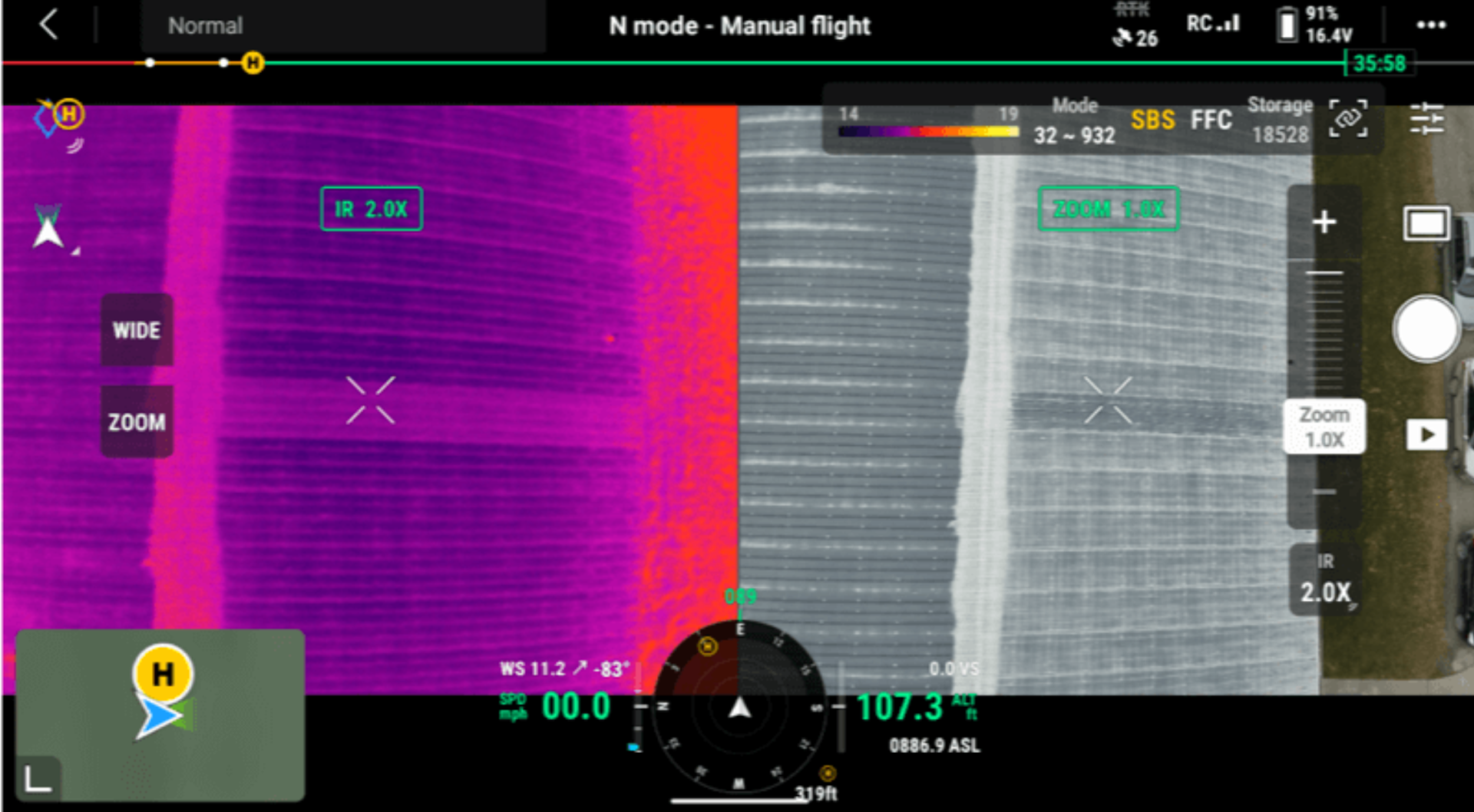
Considerations For Drone Roof Inspections
There are some key considerations when it comes to conducting a roof inspection with a drone. These include:
Size Of The Roof: If it’s a small roof, extra detail can be captured in a matter of minutes (or even seconds). Large commercial roofs may require extended flight times, so plan accordingly.
Height Of The Building: This is a major factor when planning a mission. A quick flight to the top of the building can give you a read on the building’s height, so you can better plan the mission.
The Building's Surroundings: It is important that you conduct the roof inspection in accordance with local drone laws. Read our guide to UK drone laws for more details. To improve flight safety, DJI's leading enterprise drones feature obstacle avoidance systems to help keep the drone safe when flying in tight environments.
Test Flight: Conduct a test flight over the roof to help you find the best camera settings before flight. This will help you adjust the necessary settings before the 'proper' flight - especially important if you plan to collect the data via a pre-planned automated flight plan.
Thermal Inspections: It is best to conduct a thermal inspection directly after sunset, as this ensures no thermal loading from direct sunlight, but the roof/solar panels will still be warm from the day.
Leak Detection: Try not to fly directly after it rains. It’s best to wait at least 24 hours after it’s rained (up to a week after), to understand drainage/leakage. Thermal analysis will also be a challenge if flown too close to a rain event if there’s standing water hiding an issue.
Thermal Colour Palette: If it's a thermal inspection, IronRed (pictured below) is a good palette to select, as it provides a large differentiation in colours across the temperatures in the camera's view.
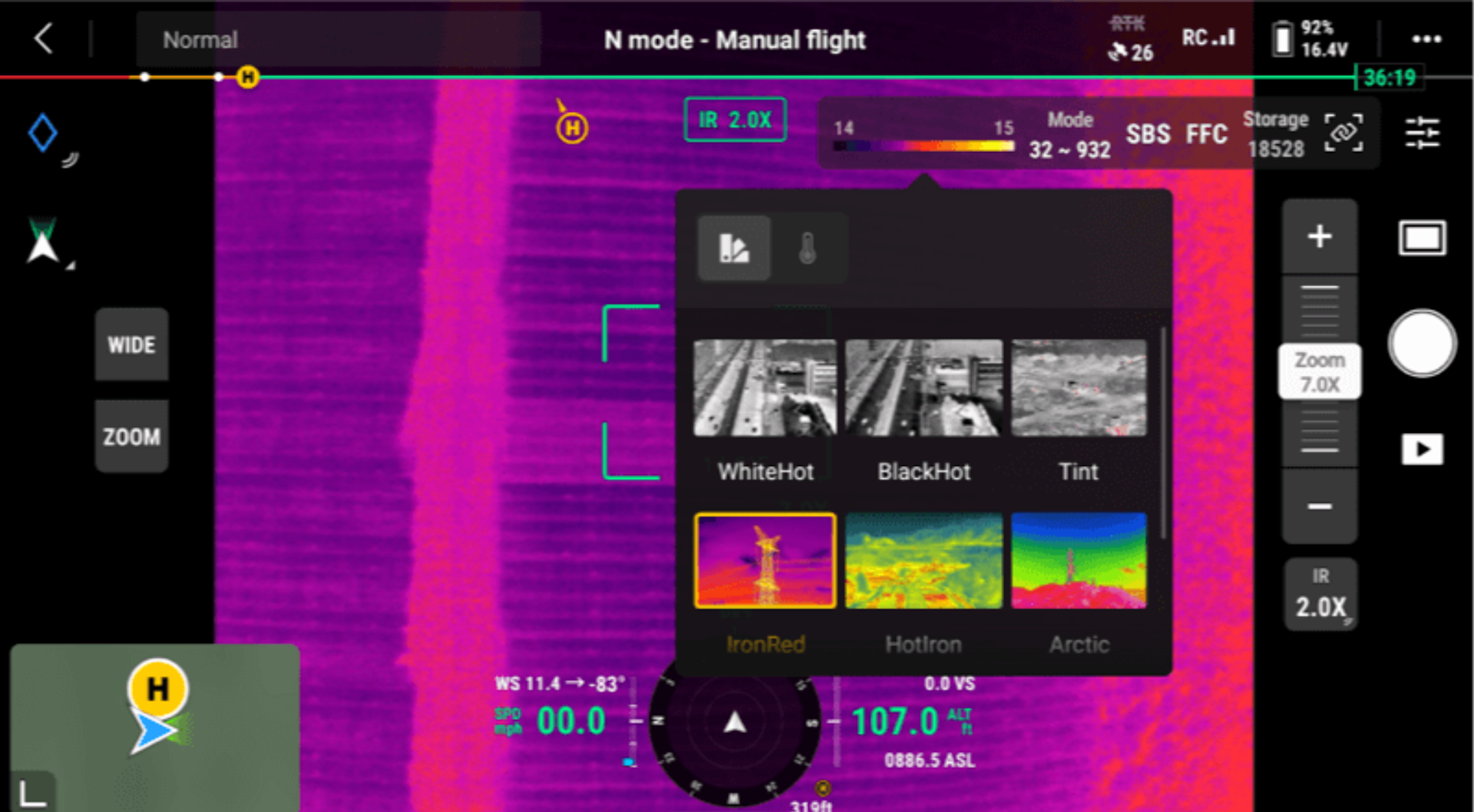
Best Drones For Roof Inspection
So, what are the best drones for roof inspection? We take a look at some of the best solutions from DJI.
DJI M350 RTK
The DJI M350 RTK is an enterprise upgrade of the M300 RTK.
This versatile drone series is ideal for roof inspections because the M300 Series can carry a range of payloads, including top-class visual/zoom and thermal cameras, spotlights, and mapping cameras like the P1 for photogrammetry, and the L2 for LiDAR and photogrammetry.
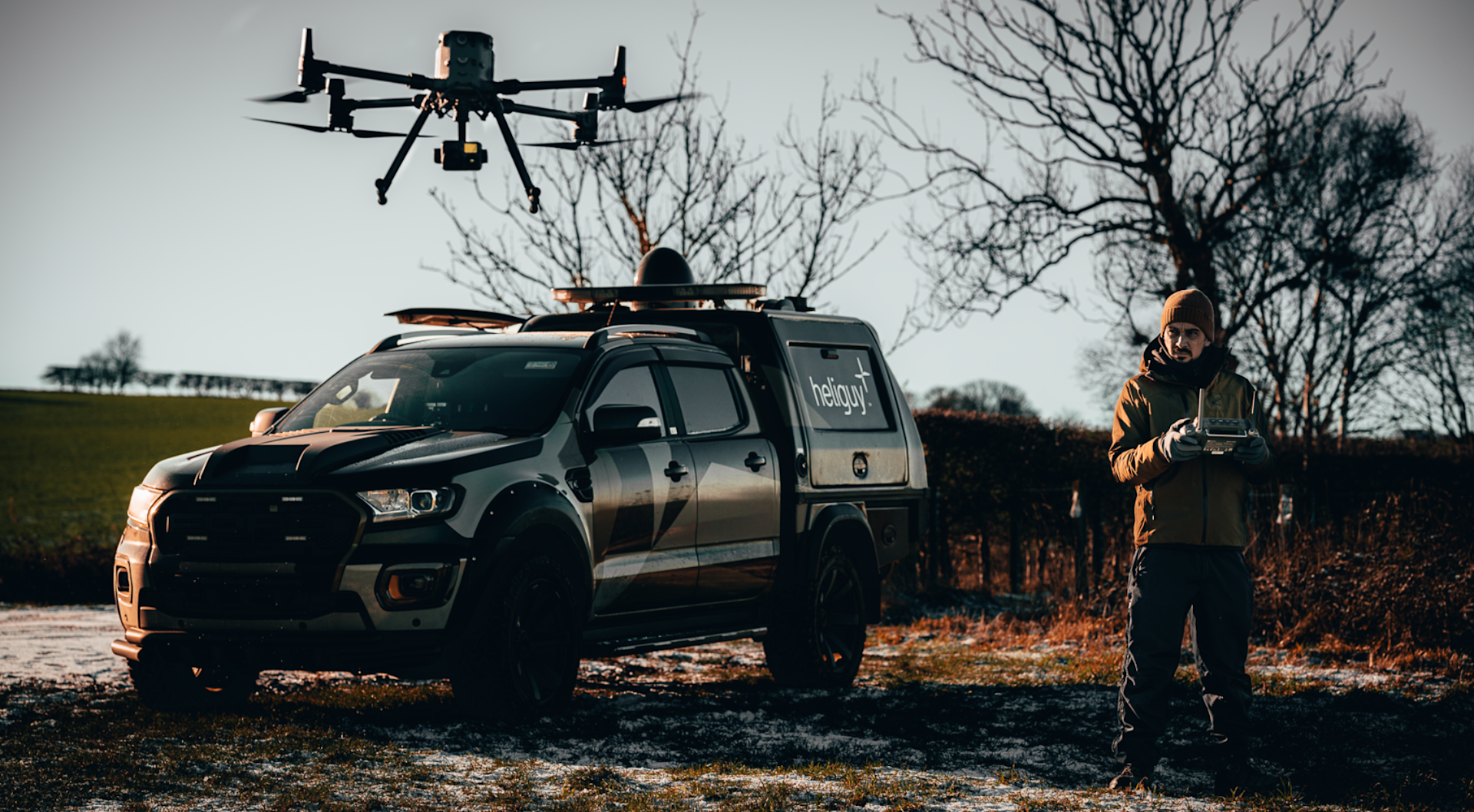
The M350 RTK has long endurance, an IP55 weather rating, and obstacle sensing.
DJI M30 Series
The DJI M30 Series packs much of the M300 Series' power, but in a smaller, more portable frame.
Highlights include its 41 minutes of flight time and an IP55 weather rating.
The M30 Series has a fixed camera system - so lacks the versatility of the M300 Series - but it has suitable sensors for roof inspection, such as a 12MP wide camera, and 48MP zoom camera. The M30T version also comes with a thermal sensor (640 x 512 resolution) for thermal roof inspections.
The drone can be integrated with the LP12 searchlight and speaker, helping to illuminate roof inspections in low-light conditions.
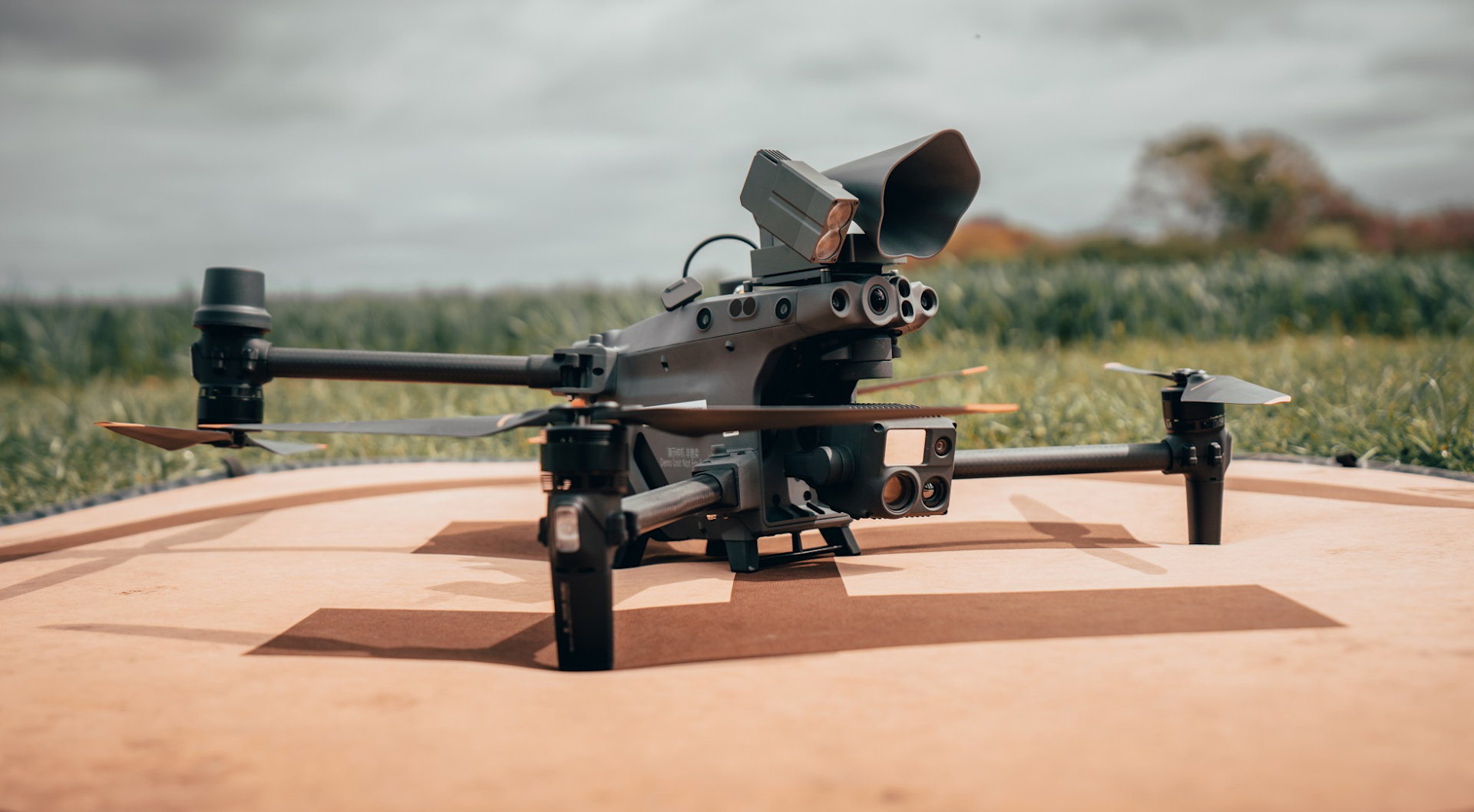
Operators of the M30 Series are also able to conduct route planning and Smart Inspection.
DJI Mavic 3 Enterprise Series
The drones in the DJI Mavic 3 Enterprise Series are a great option for roof inspection - especially the Mavic 3E and Mavic 3T (pictured below).

Both drones are foldable and, tipping the scales at just over 900g, they are significantly lighter and more compact than the M300 RTK and M30 Series.
The Mavic 3E is a good choice for visual roof inspections, thanks to its survey-grade wide sensor (4/3 CMOS, 20MP, Mechanical Shutter) and 12MP Tele camera with zoom capabilities.
Meanwhile, the Mavic 3T can be deployed for visual and thermal roof inspections, with its 640 x 512 thermal sensor, 48MP wide camera, and 12MP zoom camera.
The drones can be integrated with an RTK Module for enhanced precision, can achieve a maximum flight time of 45 minutes, and benefit from omnidirectional sensing. However, they do not have an IP rating.
DJI Mini 4 Pro
The DJI Mini 4 Pro is a popular choice for visual roof inspections, and is a particularly useful entry-level drone for people who are starting out or testing the use case.

While it lacks some of the more advanced features of DJI's more powerful enterprise platforms, the Mini 4 Pro has a lot going for it.
Its sub 250g weight makes it extremely portable. It also places it in the safest weight category and means that operators do not require drone training (A2 CofC or GVC - although we do recommend this to enhance pilot expertise) and means that pilots can operate in the Open Category's A1 subcategory (flights over uninvolved people, but not over crowds) which enables great scope for roof inspections without needing CAA permissions etc.
The drone can shoot 4K video, achieve 12MP/48MP photos on a 1/1.3 inch CMOS sensor, and has a flight time of 34 minutes. It is also significantly more cost-effective compared to the other drones mentioned in this article. It doesn't have an IP rating, though.
Drones For Roof Inspection: Summary
Roof inspections are important to maintain the integrity of the roof and to identify any potential issues early on. This can help to extend the life of a roof and maintain its efficiency, while also ensuring safety and compliance with building codes.
Drones are revolutionising the roof inspection industry by providing a safer, more efficient, and cost-effective way to inspect and maintain roofs compared to traditional methods, allowing for better and timely maintenance, and reducing the risk of accidents.
Contact heliguy™ to find out more about using drones for roof inspection and to start or scale your operations through product consultancy, support, support, training, and repairs.
